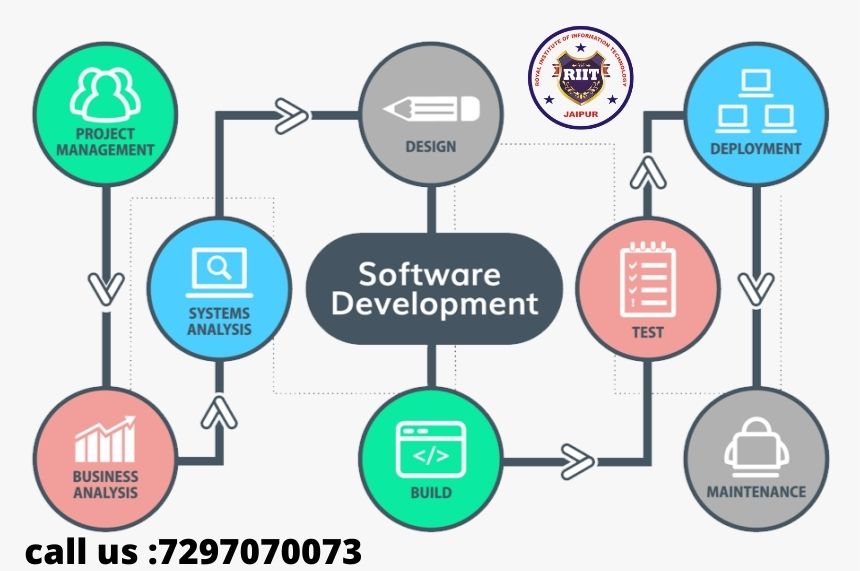
Software Development is solution provided in each and every field of Modern times. At present every business, personal collections and all the establishment including personal houses can be maintain and run through the software of personal choices.
Now a days every sector in the society having a demand of software according to their needs. To accomplished this demand, Royal Infocom is providing special packages for Software Development Course and to fulfill the needs of Society.
Software Development This is a Job Oriented course where the students are either provided proper placement or if they are interested to work at their own, then the companies are approached to avail their software Development Brilliance.
Since Software Development is a continuous process where new and upgraded versions of developmental tools are being added everyday, so we also offer refresher of value addition courses of short periods.
Software Development and Web site at our Development Center, We are using Languages like C, C++, Visual Basic, VB.Net, ASP.Net,HTML 5, DHTML, CSS ,Java Script, Jquery, Ajax, XML, PHP, Web Services, Web Building, Java as Front-end and Ms-Access, SQL Server, and Oracle as Backhand.
A software development process, also known as a software development life-cycle (SDLC), is a structure imposed on the development of a software product. Similar terms include software life cycle and software process. It is often considered a subset of systems development life cycle. There are several models for such processes, each describing approaches to a variety of tasks or activities that take place during the process. Some people consider a life-cycle model a more general term and a software development process a more specific term.
Software development activities
Planning is an objective of each and every activity, where we want to discover things that belong to the project. An important task in creating a software program is extracting the requirements or requirements analysis. Customers typically have an abstract idea of what they want as an end result, but not what software should do. Skilled and experienced software engineers recognize incomplete, ambiguous, or even contradictory requirements at this point. Frequently demonstrating live code may help reduce the risk that the requirements are incorrect.
Once the general requirements are gathered from the client, an analysis of the scope of the development should be determined and clearly stated. This is often called a scope document.
Certain functionality may be out of scope of the project as a function of cost or as a result of unclear requirements at the start of development. If the development is done externally, this document can be considered a legal document so that if there are ever disputes, any ambiguity of what was promised to the client can be clarified.
Implementation, testing and documenting
Implementation is the part of the process where software engineers actually program the code for the project.
Software testing is an integral and important phase of the software development process. This part of the process ensures that defector recognized as soon as possible.
Documenting the internal design of software for the purpose of future maintenance and enhancement is done throughout development. This may also include the writing of an API, be it external or internal. The software engineering process chosen by the developing team will determine how much internal documentation (if any) is necessary. Plan-driven models
Deployment and maintenance
Deployment starts after the code is appropriately tested, approved for release, and sold or otherwise distributed into a production environment. This may involve installation, customization (such as by setting parameters to the customer’s values), testing, and possibly an extended period of evaluation
Software training and support is important, as software is only effective if it is used correctly.
Maintaining and enhancing software to cope with newly discovered faults or requirements can take substantial time and effort, as missed requirements may force redesign of the software.